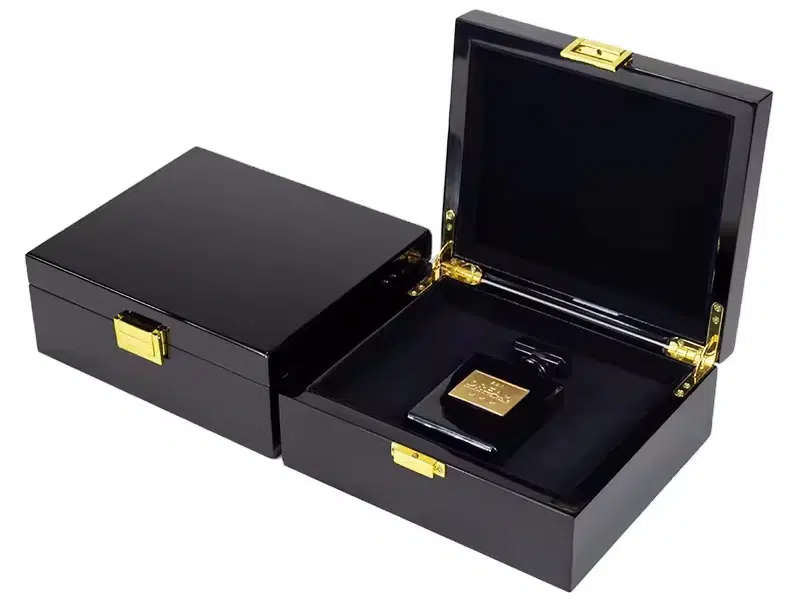
When it comes to luxury perfume packaging, high-gloss finishes do more than shine—they create a visual depth that feels almost three-dimensional. The secret behind this richness lies in how transparent lacquer is layered.
But how exactly does layering clear coats deepen the color and enhance the overall luxury look?
After years of producing premium lacquered boxes, I can say with confidence: transparent layering is where the magic happens. Here’s how we do it, and why every layer counts.
What is the role of transparent lacquer in creating a deep, luxurious finish?

Transparent lacquer isn’t just a protective coat—it’s a visual amplifier. It adds gloss, smoothness, and most importantly, optical depth1 that elevates the surface beyond flat color.
Each layer creates a translucent barrier that refracts light differently. As light passes through and reflects off the colored base, it creates an illusion of depth and richness.
Key Benefits of Transparent Lacquer
- Enhances base color vibrancy
- Adds optical depth and clarity
- Smooths microtexture for mirror reflection
- Provides protection against scratches and fading
When customers run their fingers over a box and say, “It looks like it’s glowing from within,” that’s the laque transparente2 doing its job.
How does each layer of clear lacquer interact with the base color beneath?
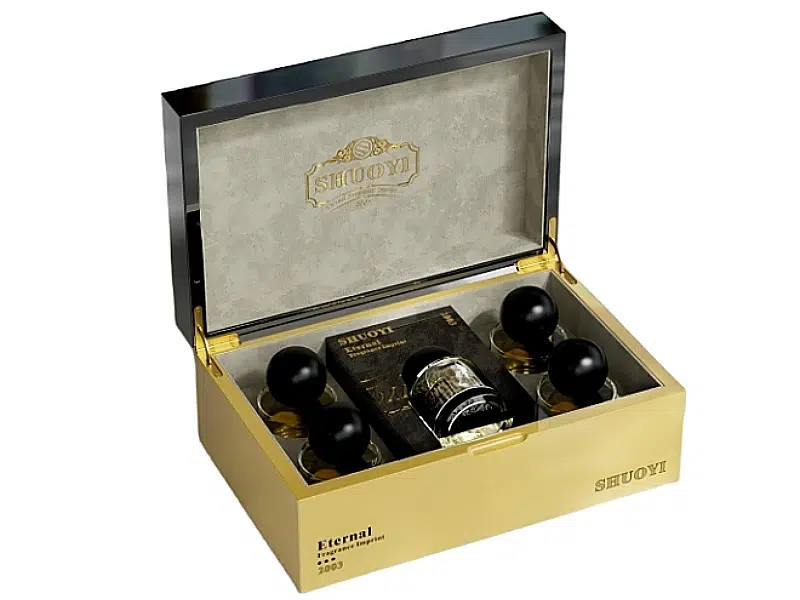
Each clear coat3 acts like a lens over the base color, altering how light enters and reflects off the surface. With every additional layer, the light travels deeper and reflects back with more saturation.
This creates the iconic “wet look4” and increases perceived color depth5, especially over bold or dark base tones.
Optical Interaction Breakdown
- Layer 1: Seals the base color, adds initial sheen.
- Layer 2–4: Builds depth, smooths out visual texture.
- Layer 5+: Amplifies richness, increases gloss intensity, and removes any haze.
On darker tones like deep red or navy blue, we use more transparent coats to let the light "dive in and bounce back" stronger—resulting in dramatic visual depth.
What is the ideal number of transparent layers for maximum color richness?
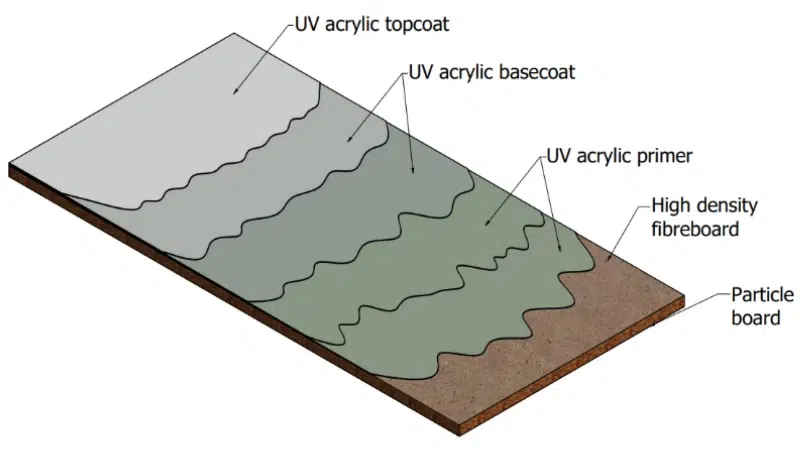
For high-gloss perfume boxes, we typically apply between 5 to 8 layers of clear lacquer6 to achieve the right balance of depth, clarity, and durability.
However, the perfect number depends on the color, gloss target, and finish type.
Recommended Clear Coat Structure
| Nombre de couches | Résultat visuel | Application Context |
|---|---|---|
| 3–4 | Moderate gloss, light color depth | Light base tones or matte gloss |
| 5–6 | Balanced gloss and visual richness | Standard finition brillante7 |
| 7–8 | Maximum depth and clarity | Dark base colors or luxury line finishes |
✔ Allow full curing between each coat
✔ Sand between layers with 1000–1500 grit to maintain optical smoothness
We always sample spray and test under showroom lighting before locking in the layer count8—it’s a visual decision as much as a technical one.
How does light reflection and refraction affect perceived color depth?
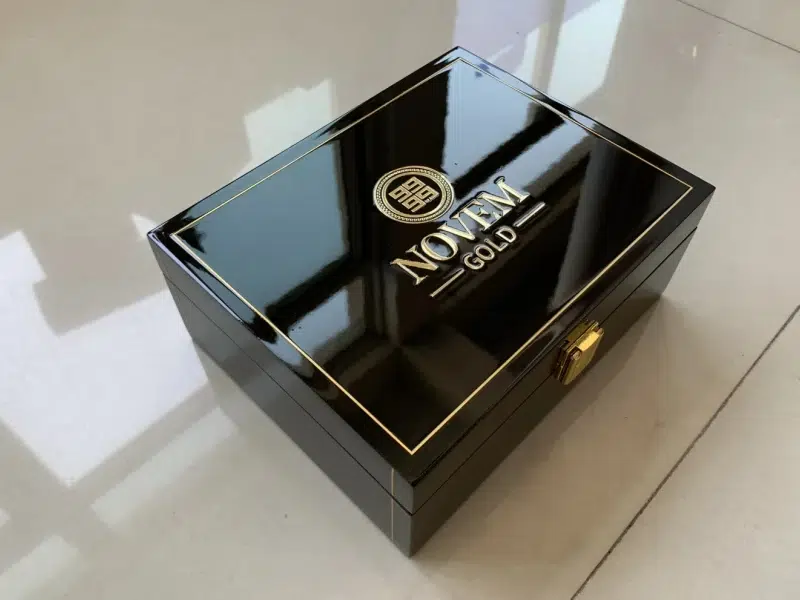
The depth effect of lacquer is rooted in how light behaves9. Transparent layers bend (refract) incoming light, and as it reflects off the base color, the eye perceives both depth and saturation.
With more transparent coats, there are more “lenses” for light to pass through and return from, creating complexity in the reflected image.
Visual Effects Created by Transparent Layers
- Refraction: Light bends slightly at each lacquer interface.
- Reflection: Internal reflections between layers add shimmer and movement.
- Contrast Enhancement: Surface gloss creates sharper transitions between light and shadow.
A customer once described one of our black lacquer boxes as “ink trapped in glass”—a perfect way to describe the effect of layered transparency.
What are the best techniques to apply transparent lacquer without cloudiness or haze?
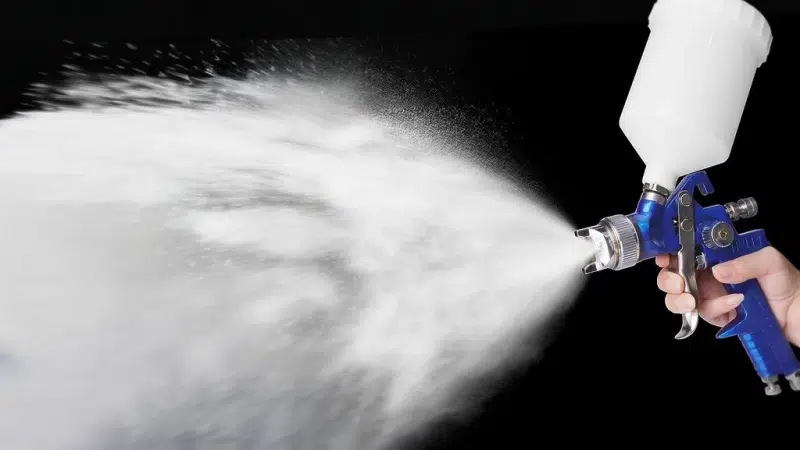
Clarity is everything. One cloudy coat10 can ruin the effect of all previous layers. Proper spraying technique and environment are key to keeping each layer crystal-clear.
Tips for Clear Lacquer Application
✔ Use a clean, filtered spray gun – No leftover pigments or moisture.
✔ Mix lacquer gently – Avoid air bubbles; stir, don’t shake.
✔ Strain every batch – Use a 150-micron mesh filter before spraying.
✔ Apply in thin, even coats – Heavy coats trap solvent and cause cloudiness.
✔ Maintenir optimal booth temperature11 – 20–25°C with 50–60% humidity.
Avoiding Haze or Milky Finish
- Don’t spray if humidity is too high (over 65%)
- Don’t recoat too soon—allow full flash-off
- Keep a clean, dust-free finishing area
Early in my career, I lost two full batches to blushing caused by humidity. Now we monitor booth conditions daily, and use retarder thinner when needed.
How do polishing and curing processes influence the clarity of transparent layers?

The final visual effect isn’t just about layering—it’s about what happens after the last coat. Proper curing and polishing12 refine the gloss and sharpen the depth of color beneath.
Curing Tips
- Allow at least 12–24 hours for full solvent evaporation
- For best results, cure at controlled temperature (≤30°C) to avoid shrinkage
Polishing Process (3 Stages)
- Leveling Polish (Compound)13 – Removes micro-defects from final coat
- Refining Polish – Smooths gloss, enhances light reflection
- Finishing Polish14 – Buffs to mirror finish, removes haze or swirls
✔ Use clean, soft foam pads
✔ Work slowly at low speed (1000–1500 RPM)
✔ Clean with microfiber between stages
A good polish doesn’t just make it shinier—it makes the colors look deeper and more dimensional. That’s what separates average gloss from premium gloss.
Conclusion
Layering transparent lacquer is one of the most effective techniques for adding richness, depth, and sophistication to high-gloss perfume boxes.
Each clear layer:
- Builds optical complexity
- Enhances base color
- Creates that “under-glass” effect customers love
With careful application, environmental control, and proper polishing, transparent lacquer becomes more than a coating—it becomes a lens through which the entire product shines.
Nom de marque : WoodoBox
Slogan : Boîtes en bois sur mesure, fabriquées à la perfection
Site web : www.woodobox.com
-
Discover the science behind optical depth and how it contributes to the luxurious look of finishes. ↩
-
Explore this link to understand how transparent lacquer can transform surfaces and elevate their aesthetic appeal. ↩
-
Understanding the role of clear coat can enhance your knowledge of automotive finishes and their effects on color depth. ↩
-
Exploring the techniques behind the wet look can help you appreciate the artistry in automotive painting and finishing. ↩
-
Learning about color depth can improve your understanding of paint choices and their visual impact on vehicles. ↩
-
Explore this link to understand the properties and applications of clear lacquer in achieving high-gloss finishes. ↩
-
Discover effective techniques for achieving a high-gloss finish, enhancing your knowledge for better results in your projects. ↩
-
Learn how layer count influences finish quality, helping you make informed decisions for your coating applications. ↩
-
Understanding how light behaves is crucial for grasping the principles of optics and visual perception. Explore this link for deeper insights. ↩
-
Discover effective strategies to prevent cloudy coats in lacquer application, ensuring a perfect finish for your projects. ↩
-
Find out the ideal booth temperature for lacquer application to achieve the best results and avoid common pitfalls. ↩
-
Understanding the impact of curing and polishing can enhance your finishing techniques for better clarity and depth in your projects. ↩
-
Learn about Leveling Polish to effectively remove micro-defects and achieve a clearer finish in your work. ↩
-
Discover the benefits of Finishing Polish for achieving a flawless, mirror-like clarity in your projects. ↩





